Conservatories have long been a popular addition to homes, providing a unique combination of indoor and outdoor living. These adaptable buildings not only improve the visual attractiveness of a house but also offer a useful and appealing area for leisure, entertainment, and enjoying the beauty of nature. The perfect conservatory will change your house and way of life whether your intended use is for a sunroom, extra living space, or a light and airy garden room.
Benefits of Adding a Conservatory to Your Home
Adding a conservatory to your house may improve it in many ways. First of all, it can greatly expand the living area by creating a smooth transition between interior and outdoor spaces. Second, this well-planned addition may bring in an abundance of natural light into your home, fostering a cosy and welcoming ambiance that can uplift your spirits and enhance your wellbeing. Finally, it is a wise investment for the future, as it may also increase the value of your home.
Understanding Different Types of Conservatories
There is a vast array of styles and designs available for these extensions, each with its own unique characteristics and advantages. Let’s examine the various types and their attributes:
Traditional Conservatories: Features and Advantages
Ornate and beautiful designs define traditional styles, sometimes known as Victorian or Edwardian. Large windows, a pitched roof, and elaborate details that pay homage to historical architectural forms are common features. These classic designs have an enduring appeal and may fit in well with an older home’s current design.
Modern Conservatories: Features and Advantages
Modern conservatories have a neat, modern look. Common elements of these structures include large glass sections and basic lines, which accentuate their elegant yet modest look. These are ideal for homeowners that appreciate a refined design that blends nicely with several architectural styles.
Victorian Conservatories: Features and Advantages
Victorian designs include intricate details that make them a timeless choice. Large windows, a complex roof, and tasteful ornamental details evoking the bygone era are typical features. Homeowners looking to give their houses a little more opulence and historical charm are fond of these conservatories.
Edwardian Conservatories: Features and Advantages
Edwardian conservatories are similar to their Victorian predecessors in many ways, although having a more rectangular or square shape. These structures are useful and adaptable due to their sloping roof and roomy interior. They mix in perfectly with both traditional and contemporary building designs.
Lean-to Conservatories: Features and Advantages
Lean-to designs are a more straightforward and practical choice, often referred to as Mediterranean or sunroom-style. These structures feature slanted roofs that lean against the existing wall, creating a light and spacious interior. They are an excellent option for homeowners seeking a more affordable solution or those with limited space.
How to Choose the Right Style for Your Home
Choosing the ideal option for your house requires thorough evaluation of several criteria. First, evaluate the architectural type of your house and the general appearance you wish to get. Think about the conservatory’s intended use, the available space, and the desired natural light capture quantity. Consider long-term maintenance requirements and energy economy as well to make sure your investment fits your needs and budget.
Factors to Consider When Selecting a Design
When choosing a conservatory design, there are numerous crucial elements to consider:
Architectural Style: Ensure that the conservatory compliments your home’s current architecture, whether classic or modern.
Size and Layout: Measure the available area and decide on the ideal size and layout to maximise functionality and flow.
Lighting and Ventilation: Determine the natural light and airflow needed to produce a comfortable and energy-efficient environment.
Materials and Finishes: Choose high-quality materials and finishes that are long-lasting, easy to maintain, and visually appealing.
Budget and Costs: Create a realistic budget and include long-term expenditures like installation, heating, and maintenance.
Does a Conservatory Add Value to Your Home?
Investing in a well-thought-out, premium structure can significantly increase your home’s value. These features enhance the property’s overall appearance and provide additional living space, making them highly desirable. A carefully designed conservatory can be a valuable enhancement that yields benefits when it comes time to sell your home.
Tips for Maintaining and Caring for Your Conservatory
In order to keep your conservatory in top shape and continue to bring you pleasure for many years to come, it is imperative that you maintain and care for it correctly. Its lifespan can be increased with routine cleaning of the windows and frames, making sure there is enough ventilation, and taking quick care of any problems. Consider making an investment in energy-efficient features like insulation and high-performance windows to increase thermal efficiency and save energy bills.
Finding the Perfect Conservatory for Your Home
Choosing the right conservatory for your house is an important decision that can impact both your living experience and the overall value of your property. Making an informed decision that satisfies your unique requirements and preferences is possible if you are aware of the many types and the important considerations. The perfect addition to your house is just waiting to be found, regardless of your preference for the sleek sophistication of a modern design or the timeless elegance of a traditional one.
To receive a free quotation and explore the ideal conservatory options for your home, contact our team of experts today at 01773 607118. At CJ Fullwood, we will work with you to discover the perfect solution that aligns with your style, functionality, and budget requirements.
